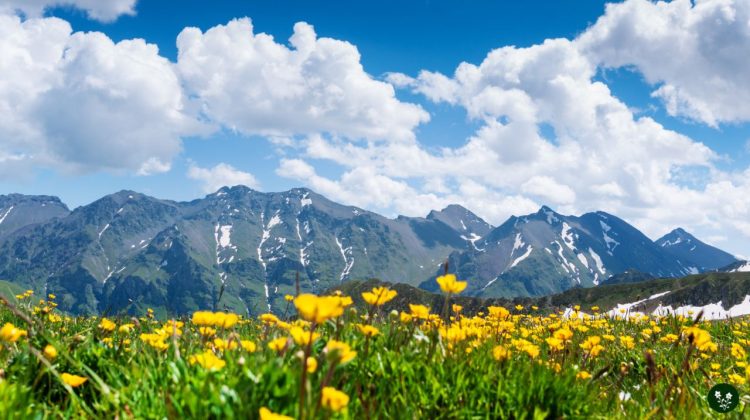
Imagine standing on the edge of a craggy mountain peak, the icy wind teasing your senses, and surrounded by an unexpected spectacle of color.
This is the captivating world of mountain flowers, a realm where nature dares to paint vibrant strokes against a rugged, snowy canvas.
These aren’t your everyday garden blooms.
No, these are the hardy warriors of the floral world, fearlessly challenging harsh climates and rocky terrains, blooming with a tenacity that enthralls botanists and enchants nature lovers.
This article is an invitation to journey into this fascinating world, a tour through a living gallery of 30 diverse mountain flowers.
From those you may recognize to the wonderfully exotic, these flowers grace the planet’s highest realms with beauty as robust as it is delicate.
So, prepare to embark on an exciting exploration as we unveil the mysteries and magic of these high-altitude blossoms.
In this article, we'll cover
- 1. Alpine Aster
- 2. Alpine Avens
- 3. Alpine Forget-Me-Not
- 4. Alpine Poppy
- 5. Arctic Gentian
- 6. Beargrass
- 7. Bitterroot
- 8. Black Alpine Sedge
- 9. Blue Columbine
- 10. Blue Enzian
- 11. Bluebell
- 12. Buttercup
- 13. Edelweiss
- 14. Fireweed
- 15. Glacier Lily
- 16. Indian Paintbrush
- 17. Jacob’s Ladder
- 18. Marsh Marigold
- 19. Mountain Avens
- 20. Mountain Bellflower
- 21. Mountain Lupine
- 22. Pasqueflower
- 23. Pink Fairy Primrose
- 24. Purple Mountain Saxifrage
- 25. Queen’s Crown
- 26. Red Campion
- 27. Sky Pilot
- 28. Snow Gentian
- 29. Spring Beauty
- 30. Yellow Bell
1. Alpine Aster

- Botanical name: Aster alpinus
- Habitat: Europe, Asia, North America
- Bloom time: Summer
- Height/Spread: 12 to 18 inches tall, 9 to 12 inches wide
A jewel of the mountainous regions, the Alpine Aster charms with its daisy-like blossoms.
Usually purple or pink, these radiant flowers are a beacon of beauty against the rugged high-altitude landscapes.
They bloom from late spring to early summer, sprinkling the alpine terrain with a delightful burst of color.
2. Alpine Avens
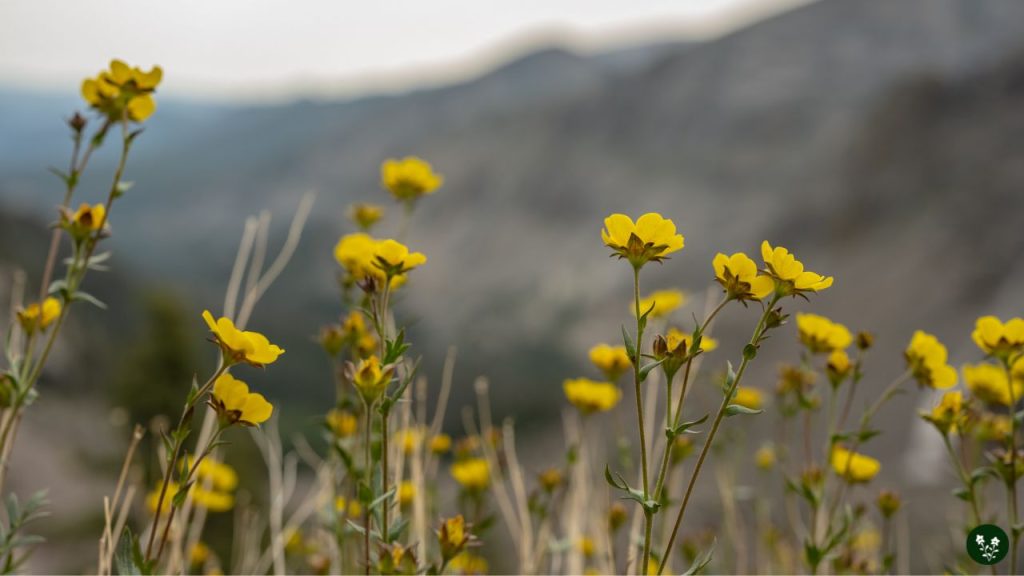
- Botanical name: Geum rossii
- Habitat: North America
- Bloom time: Summer
- Height/Spread: 12 to 18 inches tall, 9 to 12 inches wide
The Alpine Avens – a plant with an understated elegance.
Sporting sunny yellow flowers that pop against its soft, green foliage, the Avens blooms throughout the summer, a warm contrast to the snowy peaks in the background.
3. Alpine Forget-Me-Not
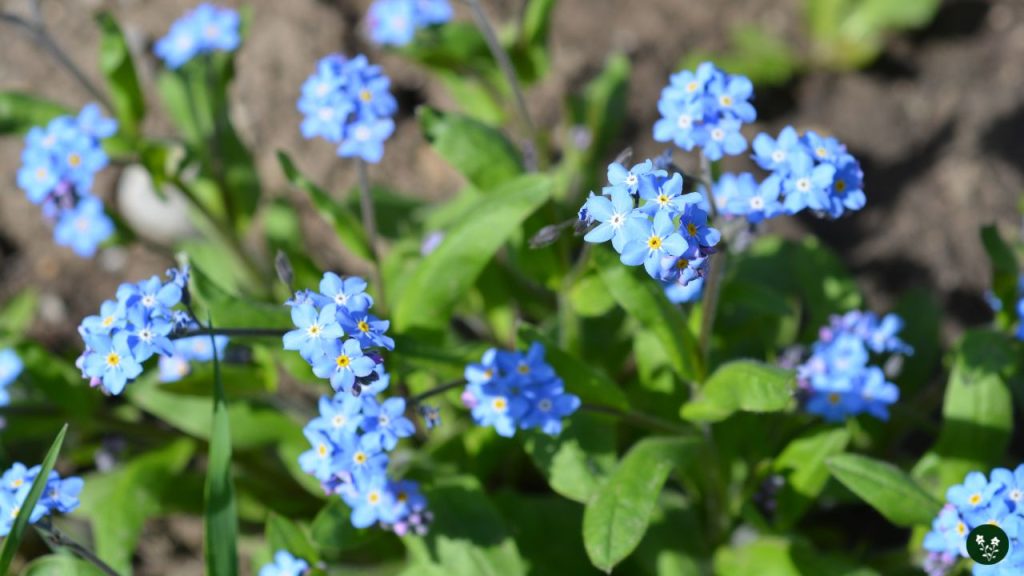
- Botanical name: Myosotis alpestris
- Habitat: Europe, Asia
- Bloom time: Summer
- Height/Spread: 6 to 12 inches tall, 6 to 9 inches wide
The Alpine Forget-Me-Not is as memorable as its name suggests. With sky-blue petals surrounding a golden-yellow center, these delicate beauties are a staple of the alpine landscape.
They are small, but their striking blue color makes a strong statement, symbolizing true love in the language of flowers.
4. Alpine Poppy
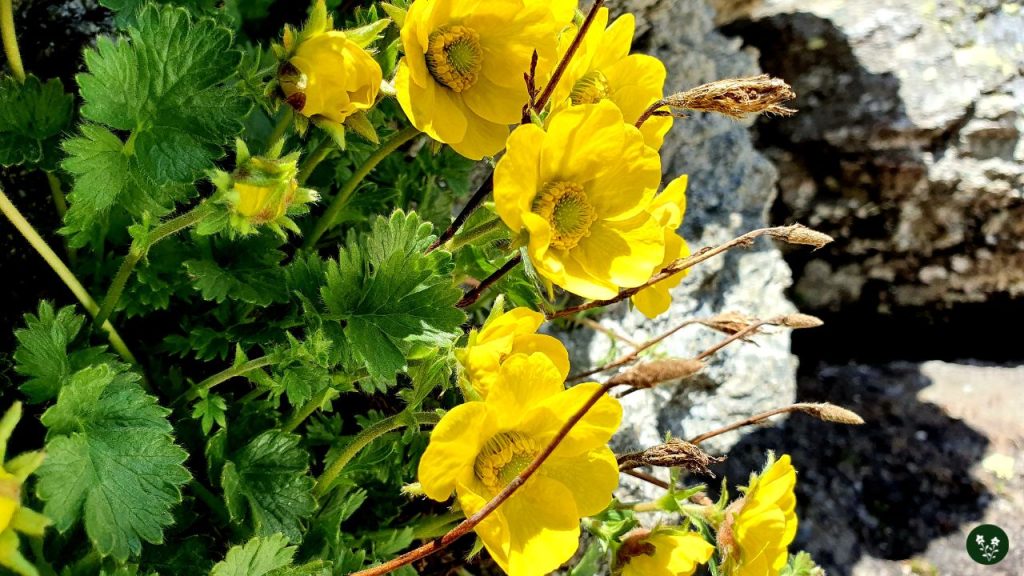
- Botanical name: Papaver alpinum
- Habitat: Alps, Pyrenees, Carpathians
- Bloom time: Summer
- Height/Spread: 12 to 18 inches tall, 9 to 12 inches wide
The Alpine Poppy, with its delicate, paper-like petals, is a joy to behold. Usually white, orange, or yellow, these vibrant flowers stand out beautifully against the rocky terrain.
Despite their delicate appearance, they are sturdy and adapted to survive in their high-altitude home.
5. Arctic Gentian

- Botanical name: Gentiana algida
- Habitat: Arctic, Alpine regions
- Bloom time: Late summer to early fall
- Height/Spread: 6 to 12 inches tall, 6 to 9 inches wide
The Arctic Gentian is a true symbol of resilience. Enduring the harsh arctic conditions, these flowers bloom late in the season, offering a brilliant blue spectacle.
Their tubular, upright flowers are a beacon of vibrancy amidst the stark Arctic landscapes.
6. Beargrass
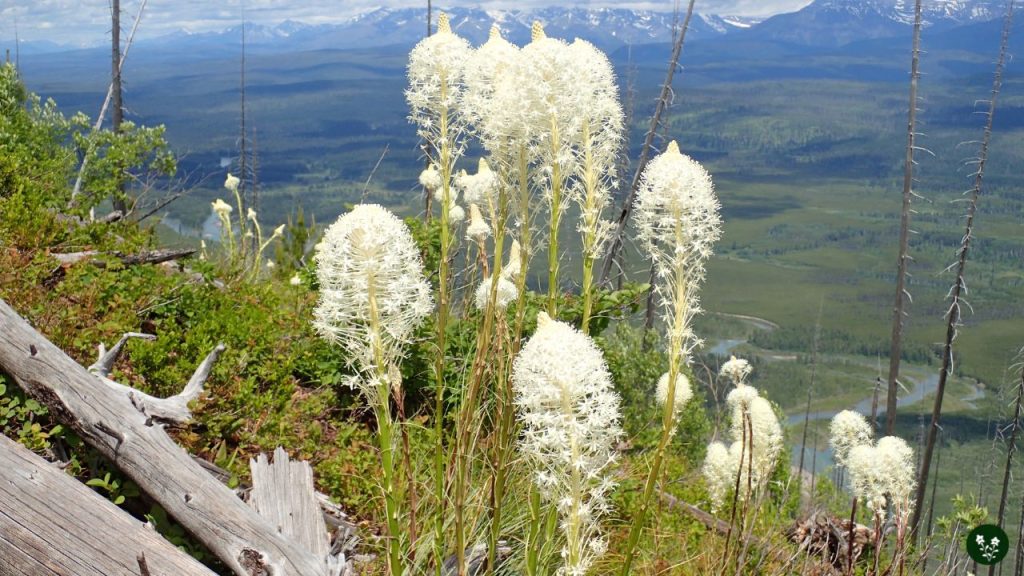
- Botanical name: Xerophyllum tenax
- Habitat: North America
- Bloom time: Late spring to mid-summer
- Height/Spread: 3 to 5 feet tall, 1 to 2 feet wide
Beargrass is an interesting addition to the mountain flora with its tall, towering presence.
Its cream-colored, tufted flowers bloom in large clusters, and the plant’s sword-like leaves add a unique visual element to the landscape.
Despite its name, it is not a grass but a member of the lily family.
7. Bitterroot
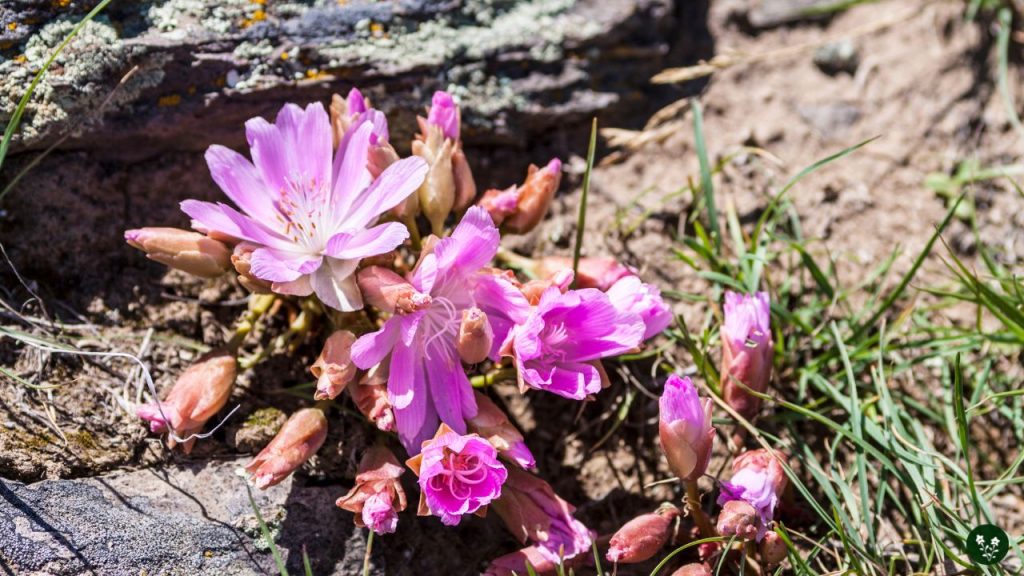
- Botanical name: Lewisia rediviva
- Habitat: Western North America
- Bloom time: Spring to early summer
- Height/Spread: 1 to 3 inches tall, 6 to 12 inches wide
The Bitterroot is a plant of survival. Named for its bitter-tasting root, it blooms with delicate pink or white flowers.
These stunning blooms, contrasted with the plant’s fleshy, succulent leaves, make it a mesmerizing sight in the harsh mountainous regions.
8. Black Alpine Sedge
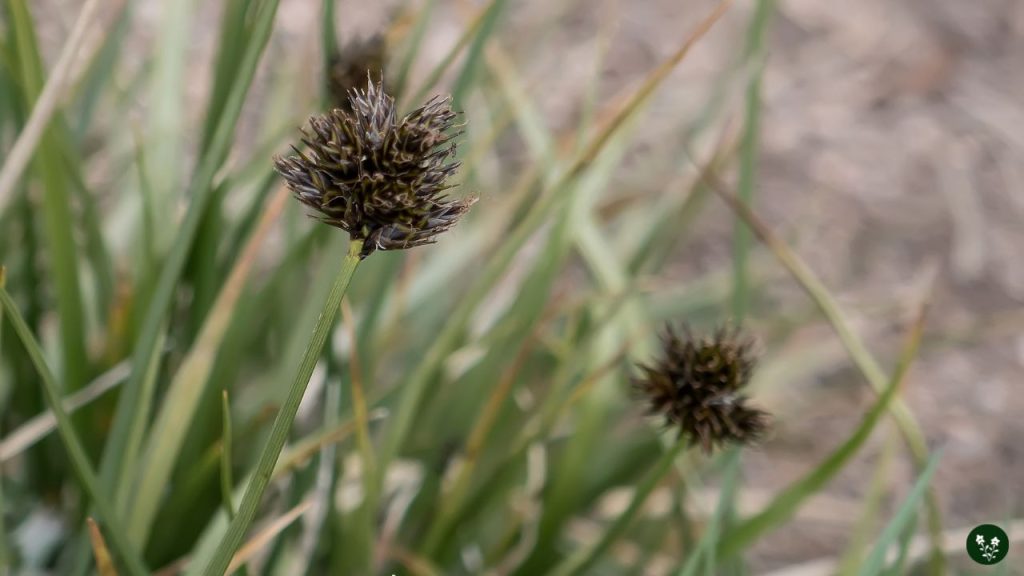
- Botanical name: Carex nigricans
- Habitat: Northern Hemisphere
- Bloom time: Late spring to early summer
- Height/Spread: 6 to 12 inches tall, 6 to 9 inches wide
The Black Alpine Sedge is a low-growing plant that forms dense tufts of narrow, dark-colored leaves.
The plant produces small, inconspicuous flowers, but it’s the distinctive blackish-green foliage that sets this sedge apart.
It provides an appealing, dark contrast to the more colorful mountain blossoms.
9. Blue Columbine
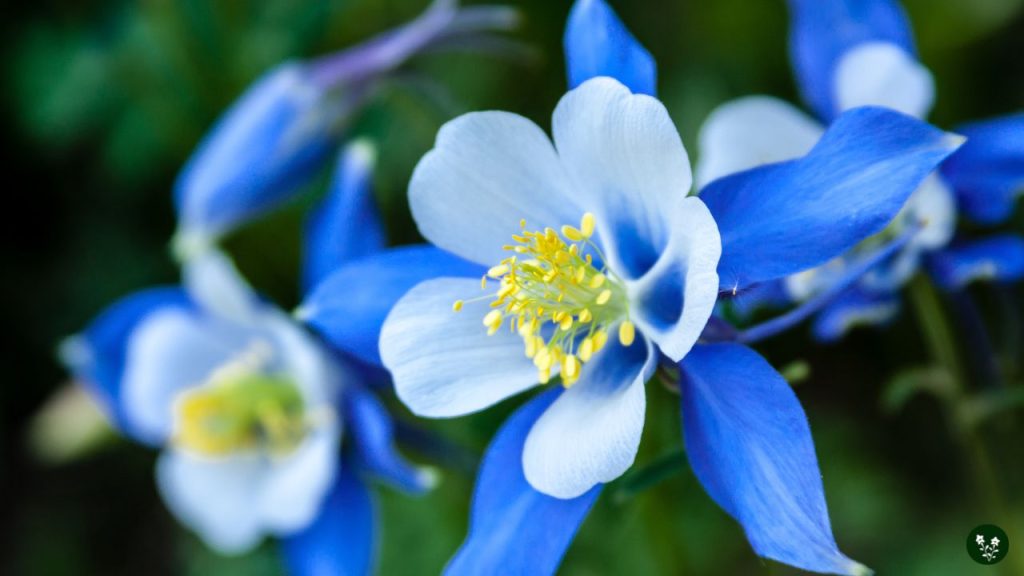
- Botanical name: Aquilegia coerulea
- Habitat: North America
- Bloom time: Spring to early summer
- Height/Spread: 1 to 2 feet tall, 1 to 1.5 feet wide
The Blue Columbine, known as Colorado’s state flower, is an enchanting spectacle with its intricate structure and vivid blue and white colors.
With a delightful nodding form and delicate, long-spurred petals, it truly embodies the wild spirit of the mountains.
10. Blue Enzian
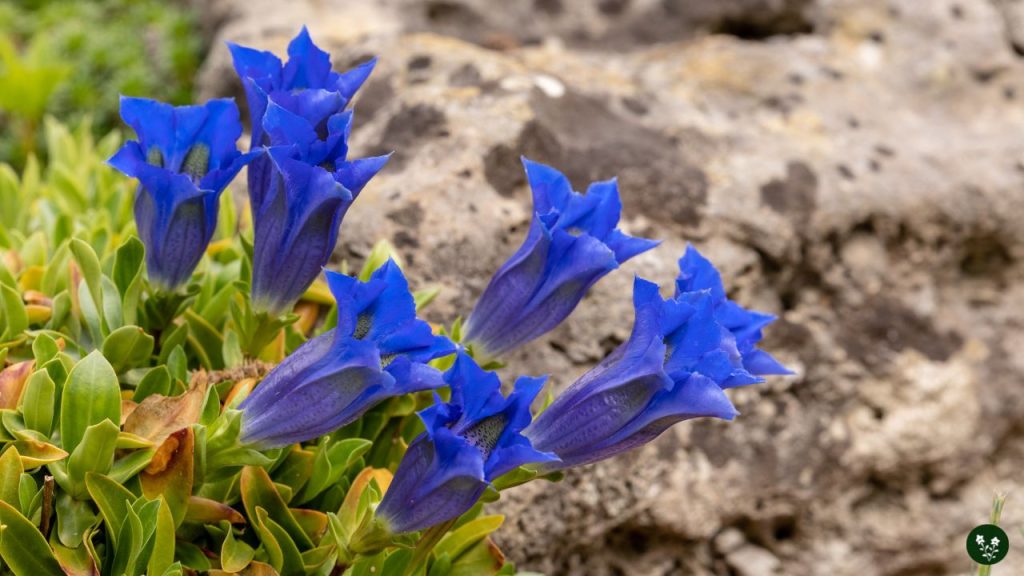
- Botanical name: Gentiana verna
- Habitat: Europe
- Bloom time: Spring to early summer
- Height/Spread: 2 to 6 inches tall, 6 to 12 inches wide
The Blue Enzian is a vibrant splash of cobalt blue in the mountainous terrain.
This striking, trumpet-shaped flower is often associated with the Alps, where it thrives in the rocky, limestone-rich soil. Its radiant color and patterned interior make it a captivating sight.
11. Bluebell
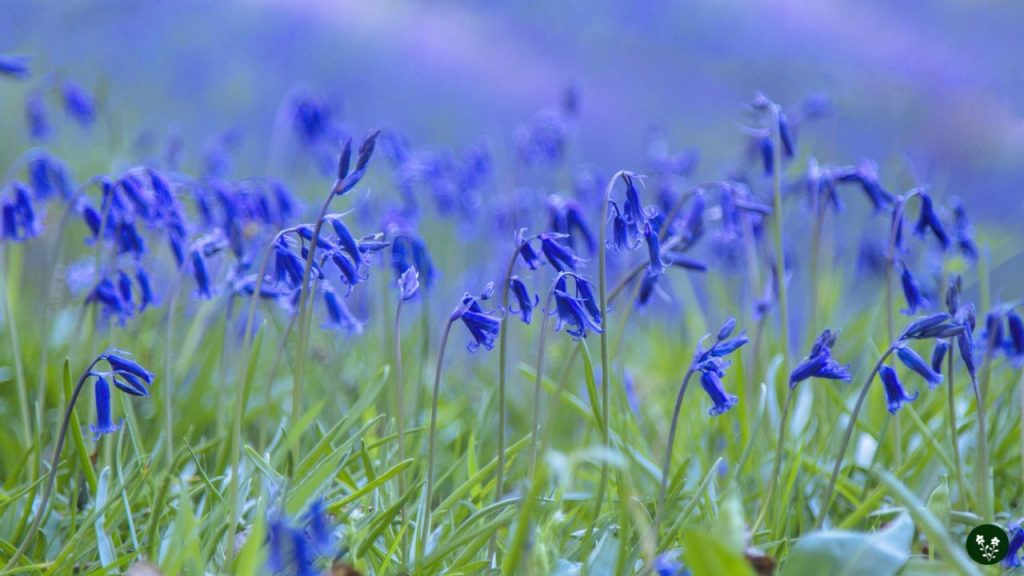
- Botanical name: Campanula rotundifolia
- Habitat: Northern Hemisphere
- Bloom time: Summer
- Height/Spread: 1 to 2 feet tall, 1 to 1.5 feet wide
A classic beauty, the Bluebell, paints the mountainscape with its delicate bell-shaped flowers.
Its enchanting blue hue dances in the wind, creating a mesmerizing sight against the backdrop of greenery.
This flower is a symbol of gratitude and everlasting love, adding a layer of symbolism to its aesthetic charm.
12. Buttercup
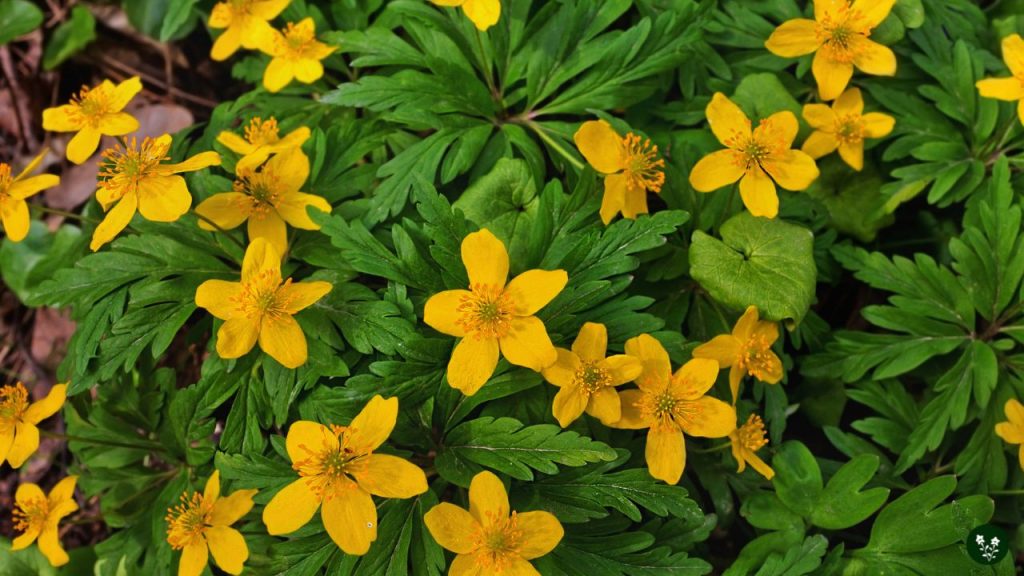
- Botanical name: Ranunculus adoneus
- Habitat: North America
- Bloom time: Summer
- Height/Spread: 6 to 12 inches tall, 6 to 9 inches wide
The Buttercup, with its glossy yellow petals, is like a splash of sunshine on the mountainside.
This cheerful flower is known for its radiant glow, which is caused by the petals’ unique structure reflecting light.
The Buttercup adds a touch of joy to the rocky terrain, beckoning pollinators and humans alike.
13. Edelweiss

- Botanical name: Leontopodium alpinum
- Habitat: Alps, Carpathians
- Bloom time: Summer
- Height/Spread: 6 to 12 inches tall, 9 to 12 inches wide
Edelweiss is a symbol of alpine landscapes and holds a special place in many cultures.
Its distinctive white, star-shaped flowers are surrounded by woolly bracts, giving the plant a unique appearance. Hardy and resilient, Edelweiss embodies the spirit of the mountains like no other.
14. Fireweed
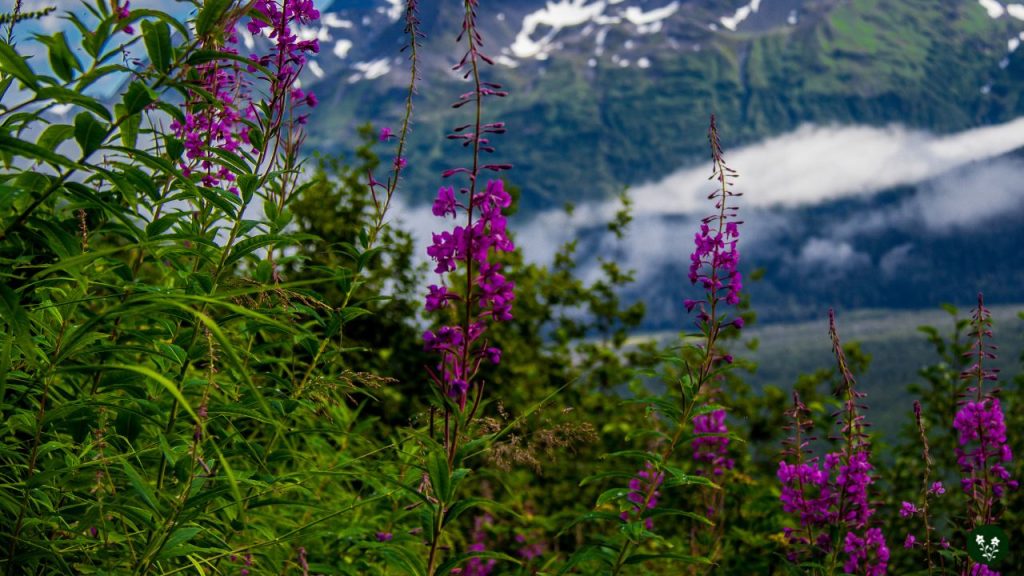
- Botanical name: Chamaenerion angustifolium
- Habitat: Northern Hemisphere
- Bloom time: Summer
- Height/Spread: 4 to 6 feet tall, 1 to 2 feet wide
Fireweed, named for its ability to colonize areas burnt by fire, is a vibrant addition to the mountain flora. Its bright pink, spire-like flowers are a feast for the eyes.
As a pioneer species, the Fireweed’s blooming is often one of the first signs of recovery after a wildfire.
15. Glacier Lily
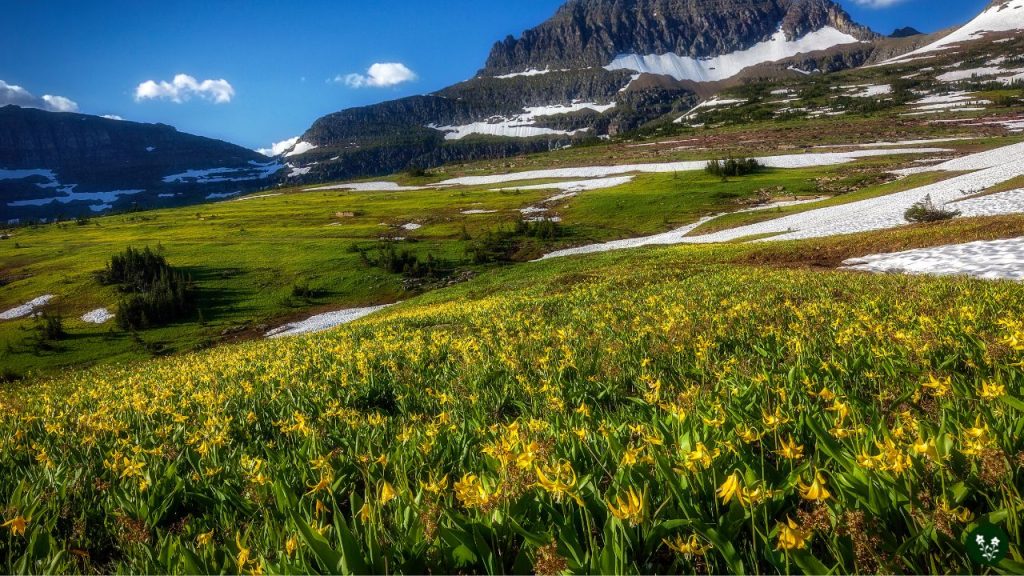
- Botanical name: Erythronium grandiflorum
- Habitat: Western North America
- Bloom time: Spring
- Height/Spread: 6 to 12 inches tall, 6 to 9 inches wide
With its bright yellow, downward-facing flowers, the Glacier Lily is a sunny delight in the snowy landscapes.
These delicate blooms appear soon after the snow melts, symbolizing the arrival of spring. The sight of these cheerful flowers peeking through the melting snow is truly heartwarming.
Discover the captivating world of flower meaning:
- The Spiritual Sunflower Meaning for Love and Life
- Amaryllis Meaning: Understanding Symbolism and Significance
- Myrtle Flower Meaning: Symbolism and Characteristics
- The Hidden Meanings of Hydrangea Flower Symbolism
- Lily Flower Meaning: Symbolism, Color, and Types
16. Indian Paintbrush
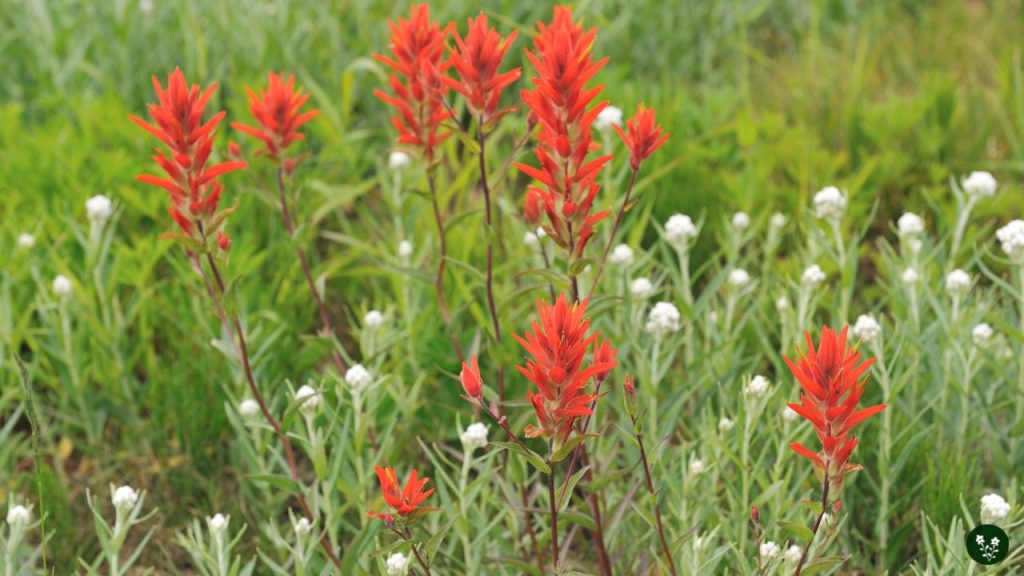
- Botanical name: Castilleja miniata
- Habitat: North America
- Bloom time: Summer
- Height/Spread: 1 to 3 feet tall, 1 to 1.5 feet wide
The Indian Paintbrush is a riot of color in the mountain meadows. Its fiery red-orange bracts, which many mistake for petals, make it look like a brush dipped in paint.
This stunning flower adds a fiery touch to the cool mountain landscapes and is an essential nectar source for many pollinators.
17. Jacob’s Ladder
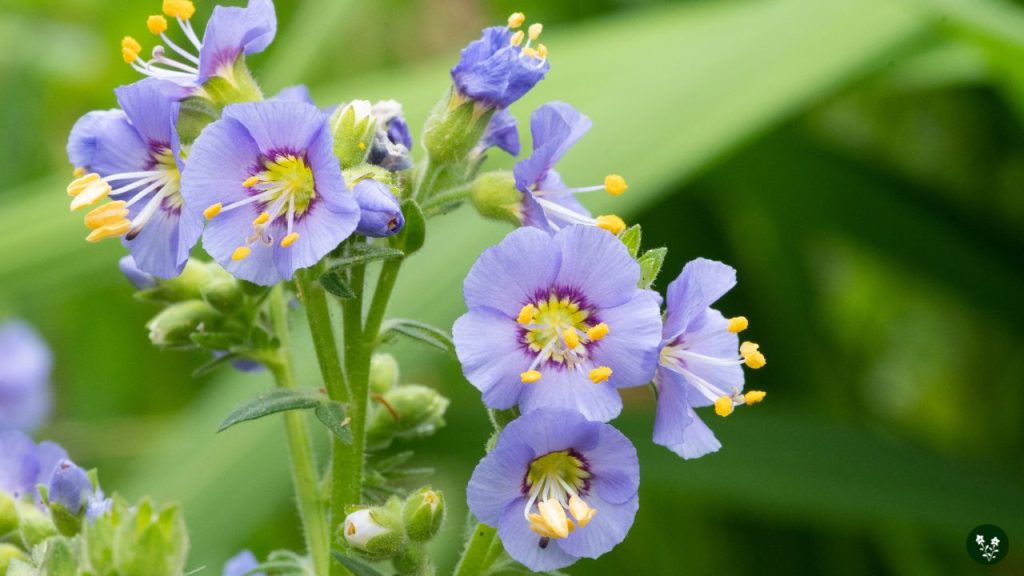
- Botanical name: Polemonium pulcherrimum
- Habitat: Northern Hemisphere
- Bloom time: Late spring to early summer
- Height/Spread: 1 to 2 feet tall, 1 to 1.5 feet wide
Jacob’s Ladder, with its clusters of bell-shaped flowers and ladder-like leaf arrangement, is a charming sight.
Its flowers, usually blue or lavender, add a splash of color to the alpine landscapes. The plant’s unique structure and vibrant blossoms make it a favorite among mountain hikers.
18. Marsh Marigold
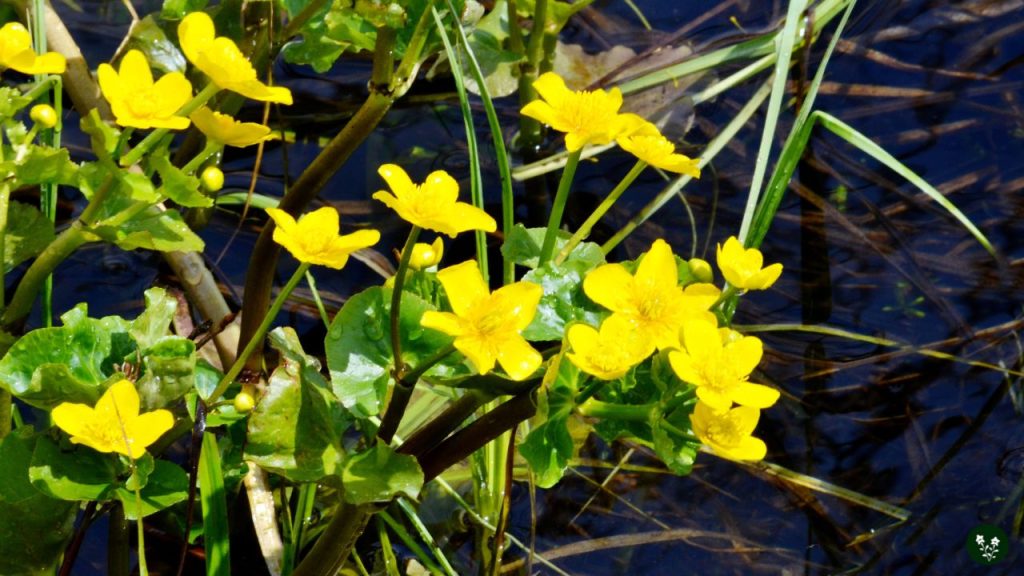
- Botanical name: Caltha leptosepala
- Habitat: Northern Hemisphere
- Bloom time: Spring
- Height/Spread: 1 to 2 feet tall, 1 to 2 feet wide
Marsh Marigold is a robust, perennial herb with large, glossy leaves and bright yellow flowers.
This plant thrives in marshy, waterlogged soils, often alongside streams or brooks. Its radiant flowers are a joyful sight, symbolizing the renewal and vitality of spring.
19. Mountain Avens
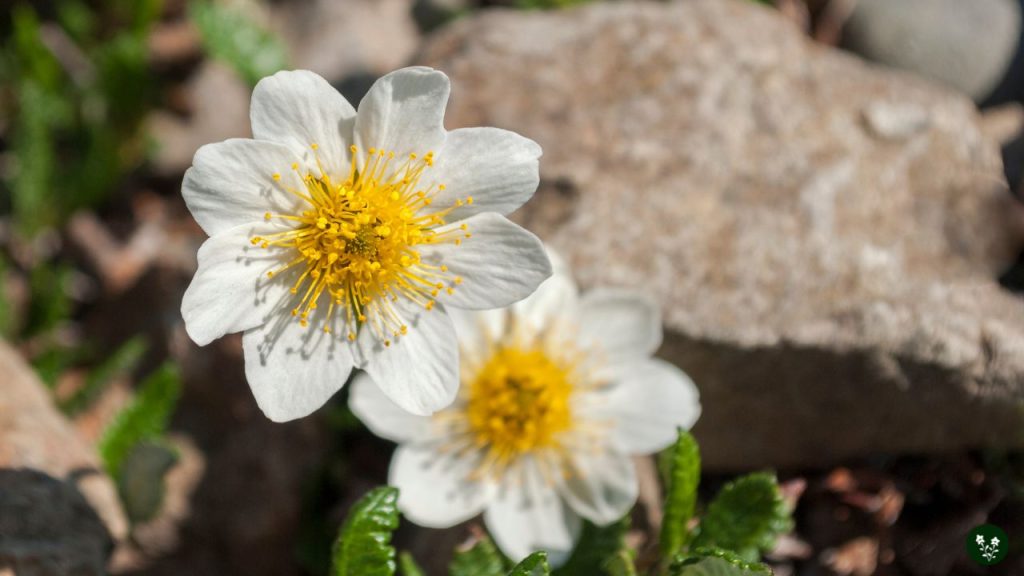
- Botanical name: Dryas octopetala
- Habitat: Arctic, Alpine regions
- Bloom time: Spring to early summer
- Height/Spread: 6 to 12 inches tall, 1 to 2 feet wide
The Mountain Avens is a low-growing plant with distinctive, eight-petaled white flowers.
The leaves, which are evergreen and have a leathery texture, turn a reddish color in autumn, providing a beautiful contrast to the snowy landscape. This flower is a symbol of resilience, thriving in harsh environments.
20. Mountain Bellflower
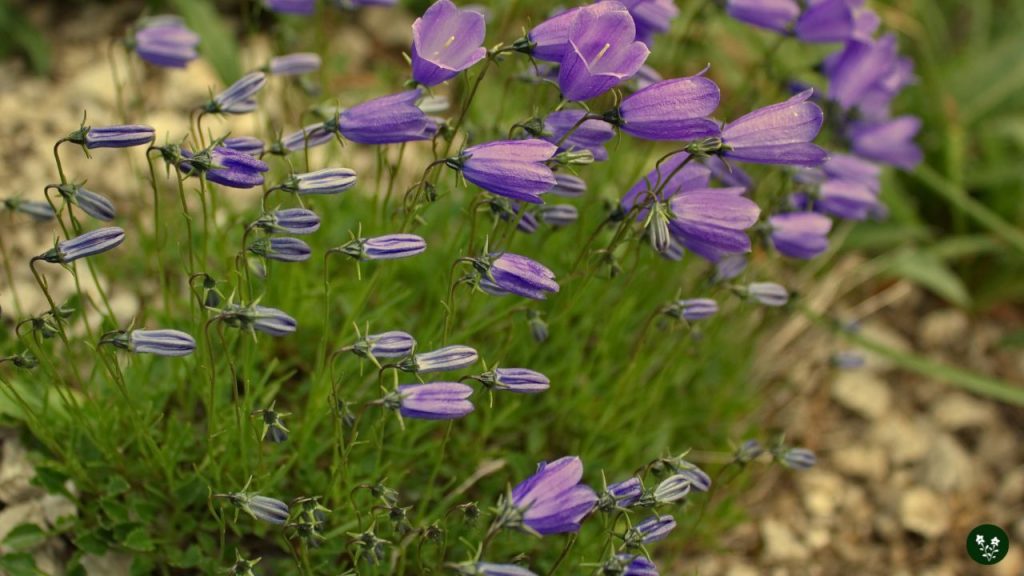
- Botanical name: Campanula lasiocarpa
- Habitat: Northern Hemisphere
- Bloom time: Summer
- Height/Spread: 6 to 12 inches tall, 6 to 9 inches wide
The Mountain Bellflower, with its delicate lavender-blue flowers, is a stunning addition to the high-altitude landscapes.
The bell-shaped flowers, complemented by a cluster of soft, green leaves, are a classic sight in the summer, adding a touch of elegance to the mountainous regions.
21. Mountain Lupine
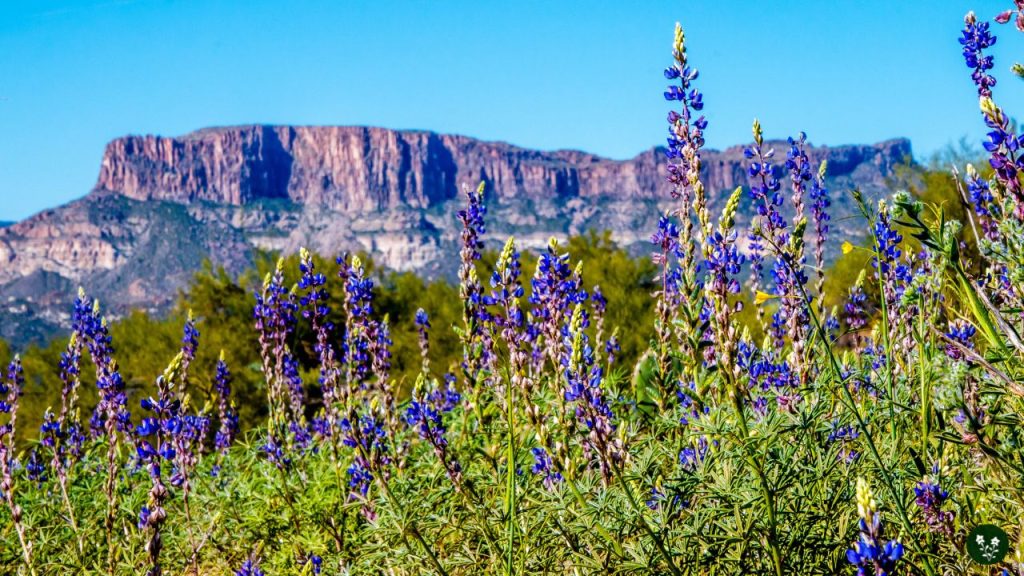
- Botanical name: Lupinus argenteus
- Habitat: Western North America
- Bloom time: Summer
- Height/Spread: 1 to 3 feet tall, 1 to 2 feet wide
The Mountain Lupine is a tall, upright plant known for its spiky clusters of blue or purple flowers. Its palm-shaped leaves add a unique visual element to the landscape.
Blooming in summer, the Mountain Lupine is a significant nitrogen fixer, enhancing soil fertility, and contributing to the overall health of the mountain ecosystem.
22. Pasqueflower
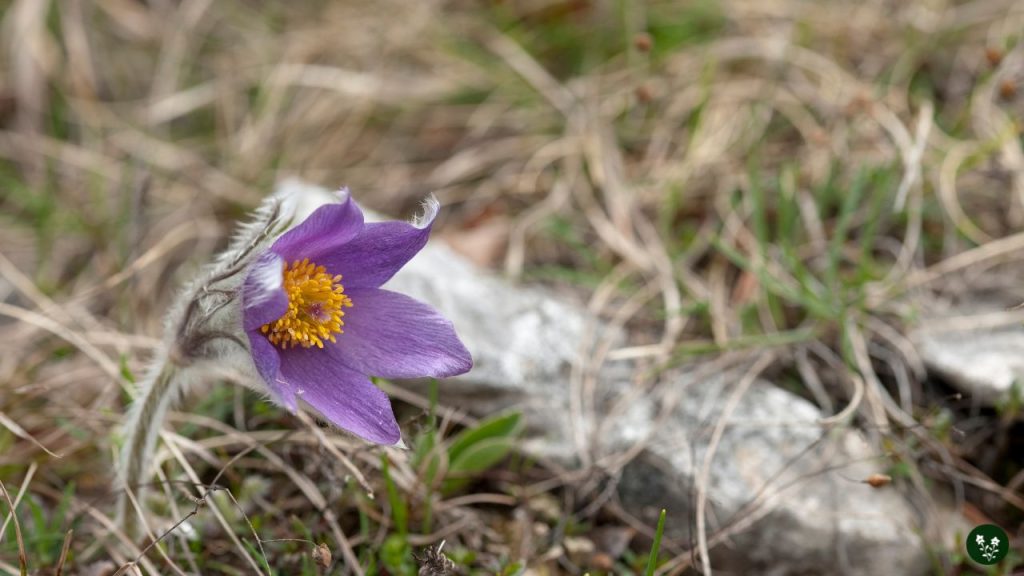
- Botanical name: Pulsatilla vulgaris
- Habitat: Europe, North America
- Bloom time: Spring
- Height/Spread: 9 to 12 inches tall, 9 to 12 inches wide
The Pasqueflower is a delightful sight in early spring with its fuzzy, bell-shaped flowers usually in shades of purple.
The name ‘Pasque’ refers to Easter (Passover) as the flower often blooms around this time. The plant’s feathery seed heads, which appear after the flowers, add to its distinctive appearance.
23. Pink Fairy Primrose
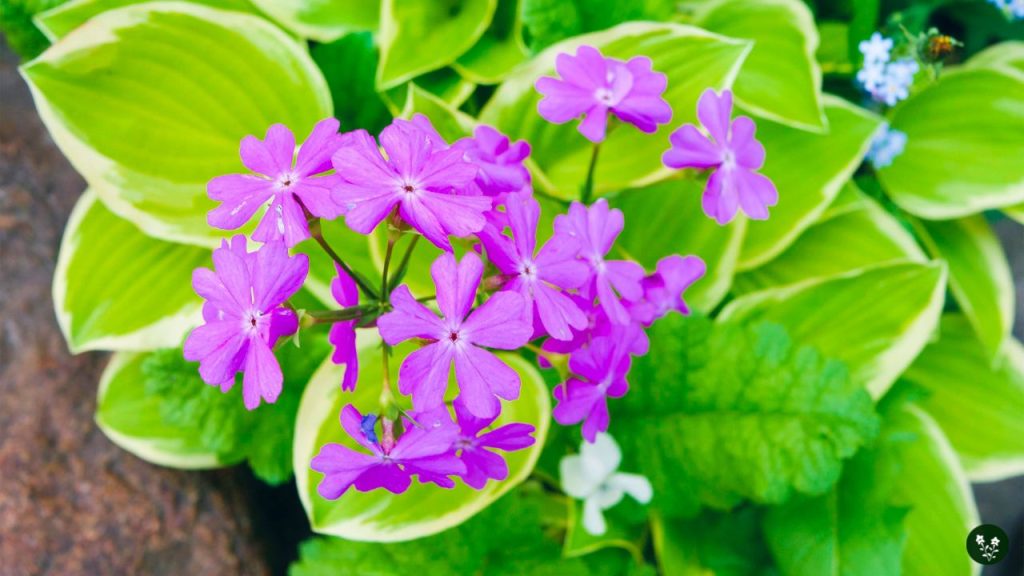
- Botanical name: Primula suffrutescens
- Habitat: Western North America
- Bloom time: Spring to early summer
- Height/Spread: 6 to 9 inches tall, 6 to 9 inches wide
The Pink Fairy Primrose is as enchanting as its name suggests. These delicate pink flowers, usually a soft pink, bloom in clusters and are a beautiful sight against the rugged mountain landscapes.
The fairy-like charm of these blossoms has made them a favorite among nature lovers.
24. Purple Mountain Saxifrage
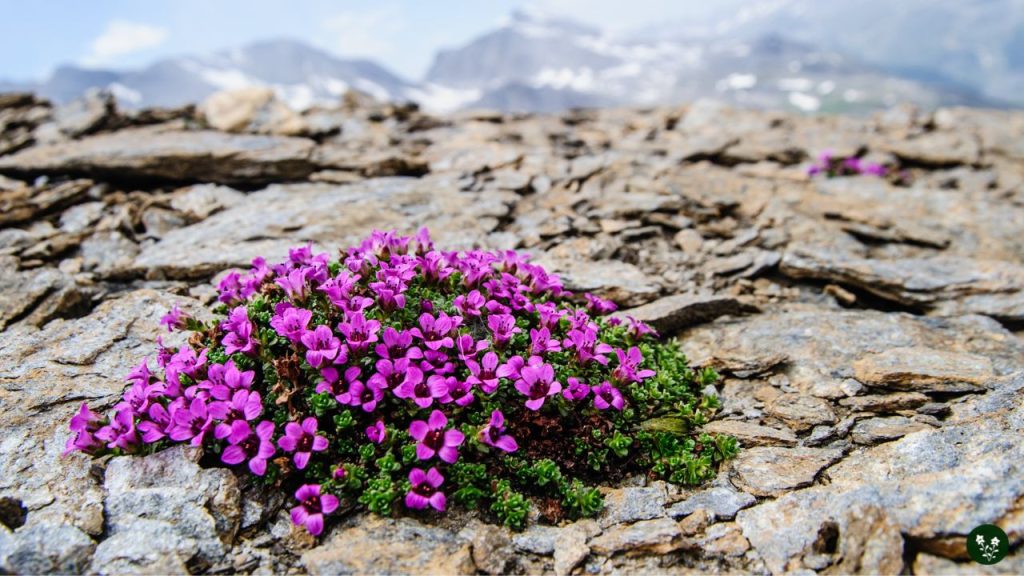
- Botanical name: Saxifraga oppositifolia
- Habitat: Arctic, Alpine regions
- Bloom time: Spring
- Height/Spread: 3 to 6 inches tall, 6 to 9 inches wide
The Purple Mountain Saxifrage is a ground-hugging plant that thrives in the crevices of rocky terrains. Its tiny, purple flowers are among the first to bloom after the winter snow melts.
These hardy flowers are a symbol of survival and resilience in the harsh mountain conditions.
25. Queen’s Crown
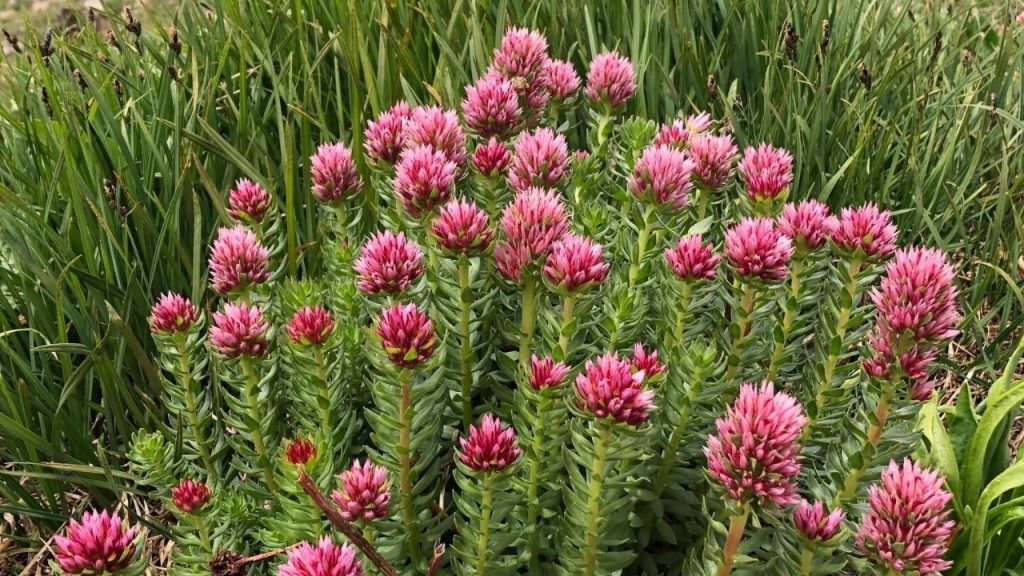
- Botanical name: Rhodiola rhodantha
- Habitat: North America
- Bloom time: Summer
- Height/Spread: 1 to 2 feet tall, 1 to 2 feet wide
The Queen’s Crown, also known as Roseroot, is a stunning plant with clusters of bright pink or red flowers.
Its succulent leaves form a dense mat, providing a beautiful contrast to its vibrant blooms. This plant is a true queen of the mountain flora, adding a royal touch to the landscapes.
26. Red Campion
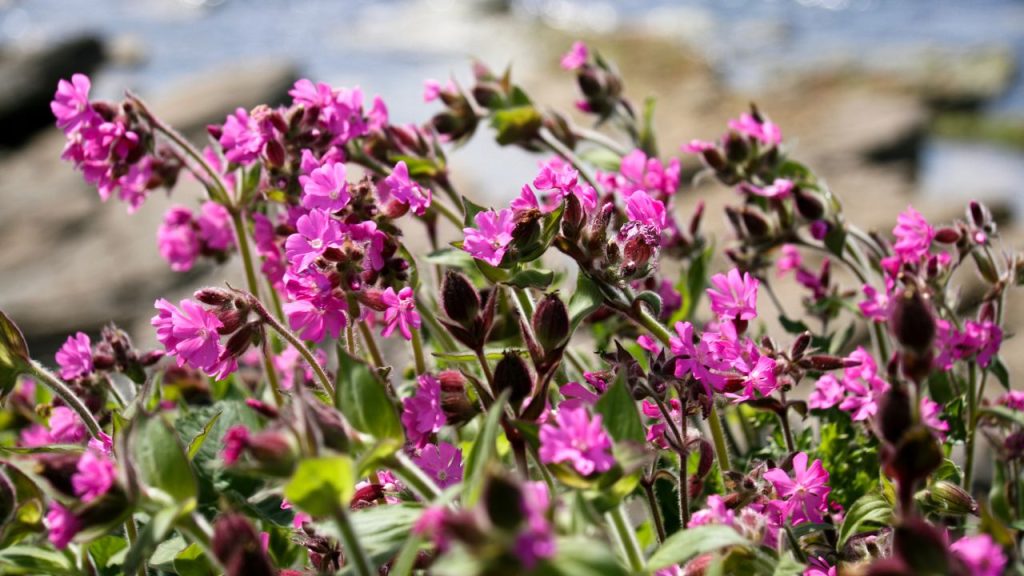
- Botanical name: Silene dioica
- Habitat: Europe, Asia
- Bloom time: Spring to early summer
- Height/Spread: 1 to 2 feet tall, 1 to 2 feet wide
The Red Campion is a delightful sight with its deep pink, almost red flowers. This plant thrives in the cool, shady areas of the mountains, its vibrant blooms adding a pop of color to the landscape.
The sight of Red Campion in bloom is a sign that summer is just around the corner.
27. Sky Pilot
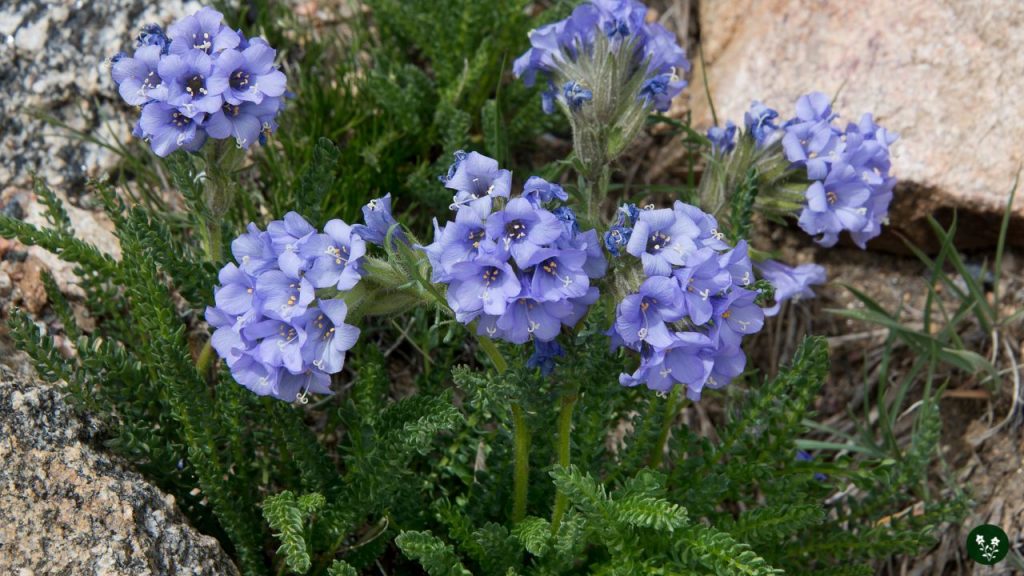
- Botanical name: Polemonium viscosum
- Habitat: Western North America
- Bloom time: Summer
- Height/Spread: 1 to 2 feet tall, 1 to 2 feet wide
The Sky Pilot, with its clusters of fragrant, blue-violet flowers, is a treat to the senses. This plant prefers higher altitudes, lending to its heavenly name.
The sight and scent of Sky Pilot in full bloom is truly an unforgettable experience for mountain hikers.
28. Snow Gentian
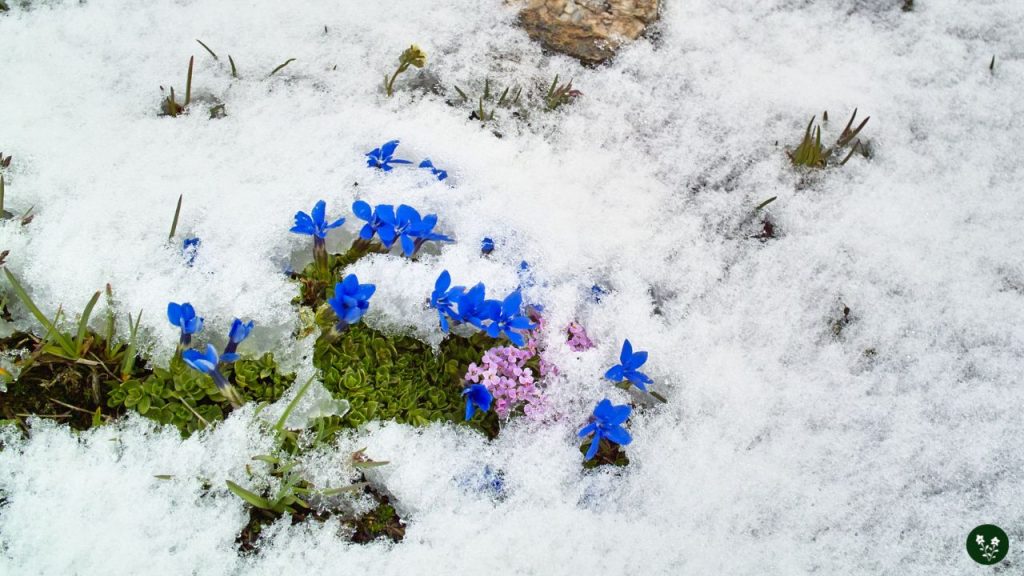
- Botanical name: Gentiana nivalis
- Habitat: Alps, Pyrenees
- Bloom time: Summer
- Height/Spread: 3 to 6 inches tall, 3 to 6 inches wide
The Snow Gentian is a late bloomer, often waiting until the end of summer to unveil its deep blue, tubular flowers. This short, robust plant is a symbol of the impending winter.
Its vibrant flowers against the snowy landscape are a mesmerizing sight, a final farewell to the warm season.
29. Spring Beauty
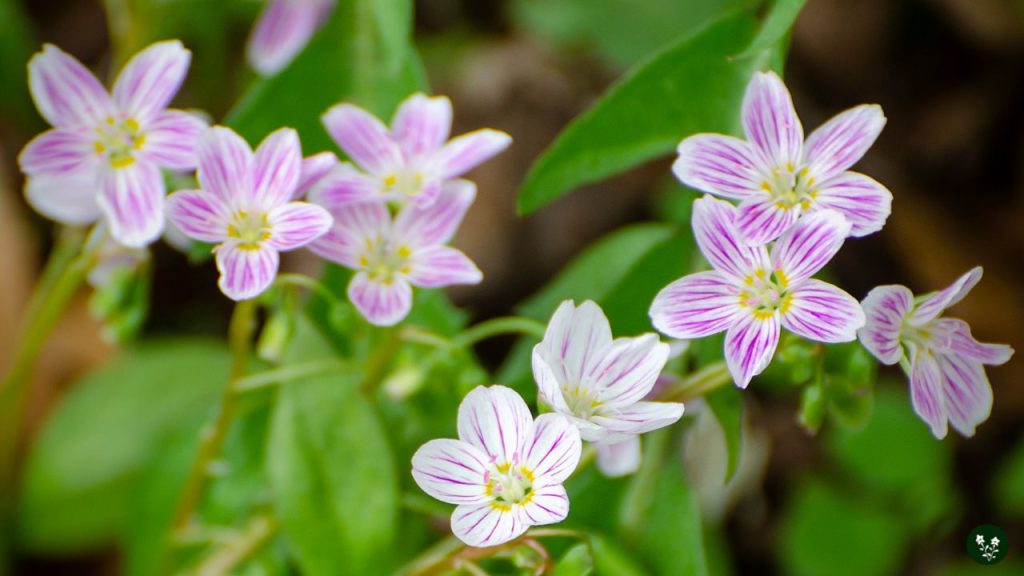
- Botanical name: Claytonia lanceolata
- Habitat: North America
- Bloom time: Spring
- Height/Spread: 6 to 9 inches tall, 6 to 9 inches wide
Spring Beauty is a fitting name for this early bloomer. Its delicate white or pink flowers, marked with darker veins, are a delightful sight in the spring.
This ephemeral wildflower is often seen carpeting the mountain woods, announcing the arrival of the much-anticipated spring season.
30. Yellow Bell
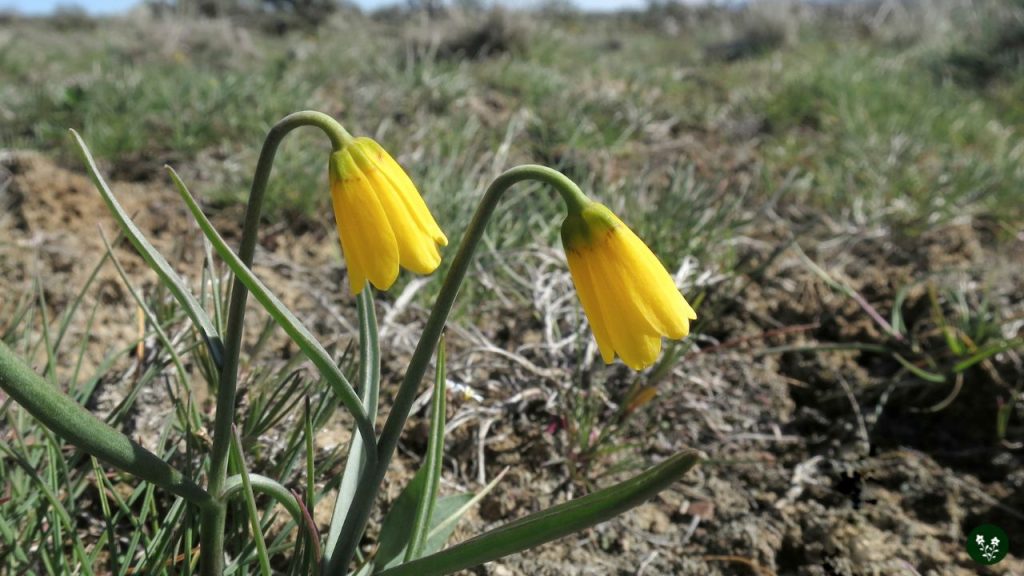
- Botanical name: Fritillaria pudica
- Habitat: Western North America
- Bloom time: Spring
- Height/Spread: 6 to 12 inches tall, 6 to 9 inches wide
Rounding off our list is the Yellow Bell. This plant, with its bell-shaped yellow flowers, is a sunny delight in the mountain landscapes.
Its nodding flowers, often spotted on rocky slopes or open woods, are a cheerful sight, signaling the start of a new growing season in the mountains.
Please note that the exact height/spread can vary depending on specific growing conditions, and bloom times can vary based on location and specific microclimates.
The botanical names are Latin names used universally to identify plants, and in many cases, they also provide information about the plant’s origin, habitat, or other characteristics.
In conclusion, mountain flowers, with their myriad shapes, colors, and survival strategies, are a testament to nature’s adaptability and creativity.
Whether you’re a hiker, a nature lover, or a botanist, the allure of these blooms is universal, adding a touch of beauty to our journey through the mountains.
Discover more about different flora types:
Leave a Reply